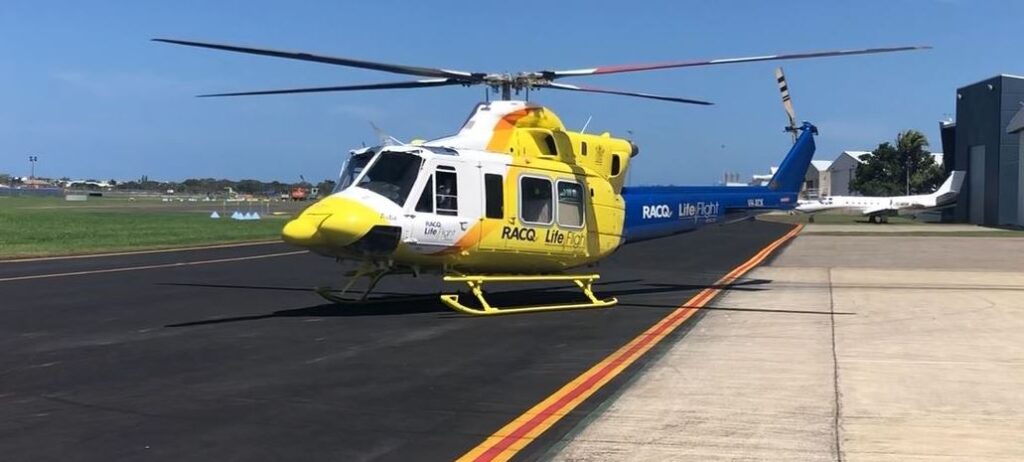
Bundaberg RACQ LifeFlight Rescue helicopter crews responded to more vehicle crashes than any other type of emergency mission last calendar year.
“Our Bundaberg crews flew to 38 motor vehicle accidents, between January and December 2020,” Director of Helicopter Operations, Brian Guthrie, said.
“On average, that is three motor vehicle incidents a month which are so serious, they require an aeromedical response.”
Bundaberg crews completed 291 critical missions, valued at more than $7.2 million. Those airlifts come at no cost to patients.
The top five Bundaberg crew callouts, according to illness and injury:
- Motor vehicle accidents (38)
- Cardiac conditions (32)
- Falls (including bushwalking/hiking, domestic and elderly) (31)
- Search and rescues (28)
- Animal incidents (bites, attacks, falls) (17)
Of all the RACQ LifeFlight Rescue teams, Bundaberg crews performed the highest number of search and rescues last year, including the rescue of a woman, who spent three nights missing on Fraser Island in September and winching four men from their capsized catamaran, in November.
Animal-related incidents rounded out the top five Bundaberg aeromedical missions.
The chopper was called to two separate shark attacks, and seven missions to assist snake bite victims.
In 2020, the fleet of RACQ LifeFlight Rescue community helicopters completed 1,947 missions.
RACQ LifeFlight Rescue Air Ambulance jets, community helicopters and critical care doctors came to the aid of 6186 people.
“The service RACQ LifeFlight Rescue provides, in Queensland, is second-to-none,” Mr Guthrie said.
“While 2020 wasn’t our busiest year overall, for our RACQ LifeFlight Rescue choppers, we’re really proud of our performance, over the past 12 months.
“Nearly 2,000 lives were saved, by our rotary aircraft across Queensland, because RACQ LifeFlight Rescue crews were able to quickly respond.”
RACQ spokesperson Clare Hunter said RACQ LifeFlight Rescue attended 278 motor vehicle crashes in 2020, which was up nearly 15 per cent on 2019.
“Sadly, last year we also saw the highest road toll on Queensland roads since 2012 and also saw an increase in risky behaviours like high-range drink driving, high-range speeding and not wearing seatbelts,” Ms Hunter said.
“RACQ LifeFlight Rescue crews do an amazing job, but we don’t want drivers meeting them because they’ve had a crash.
“In 2021 we’re urging drivers to make a commitment to avoiding the Fatal Five every time they get behind the wheel. That means not speeding, driving tired or under the influence of drugs or alcohol, putting away distractions like mobile phones and wearing a seatbelt.”
In 2020, RACQ LifeFlight Rescue staff, including aircrew, medical, engineering and fundraising, all had to quickly adopt new working procedures, required as a result of the pandemic, while still providing the essential aeromedical service without any interruption.
“To keep our crew and patients safe, throughout the pandemic, our engineering staff worked hard to modify the aircraft; to provide barriers between the front and back of the cabin, ultimately, to keep responding to Queenslanders throughout,” Mr Guthrie said.
The organisation also introduced full body gowns, goggles and boots, face masks and head protection.




